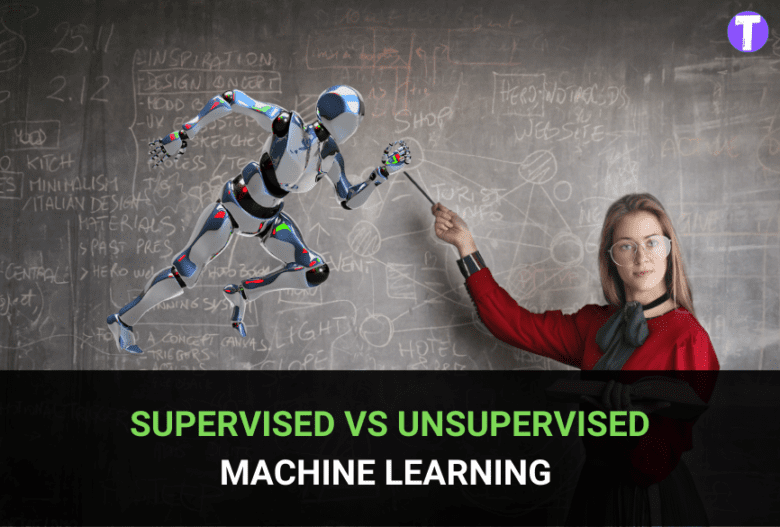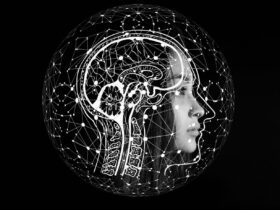Artificial intelligence (AI) and machine learning (ML), a type or subset of AI wherein the computer is being trained to predict things with more accuracy without programming, are becoming increasingly important not only in the tech sector but in every other industry too. This is especially true due to the endless number of applications being developed today by software developers and computer scientists.
Perhaps you’re interested in ML. To fully reap the benefits and even develop your own ML applications, it’s not enough to simply be familiar with it. And to be able to keep up with modern technology, a thorough understanding of machine learning is highly beneficial for developing technologies and advancing in your career.
While it can be a vast and daunting subject, it helps to start with the basics, including learning about supervised and unsupervised learning, two machine learning models. If you wish to learn more after this, you can get the facts on how to make decision trees with Python.
Supervised And Unsupervised Machine Learning
Supervised machine learning essentially refers to training software with human supervision wherein they feed the computer labeled and structured data, even feedback. On the other hand, unsupervised learning involves unstructured and unlabeled data.

Aside from the type of data these models generally process, let’s delve into how the supervised model is different from unsupervised machine learning. Read on below to learn more.
How the supervised model is different from unsupervised machine learning
- Complexity And Accuracy
One critical difference between supervised and unsupervised machine learning is their complexity and accuracy. Mainly, this can be attributed to the way learning and data processing work between these two models.
Beginning with complexity, the supervised model is known to be simpler than unsupervised machine learning. This is because of its method wherein labeled data is used based on a framework developed under human oversight. To add, its calculations can be easily done using Python and R. On the other hand, unsupervised model learning deals with unclassified and larger amounts of data requiring more powerful tools. Moreover, unsupervised learning models are also computationally complex as they require significant training to gain the correct outcomes.
In terms of accuracy, unsupervised machine learning is known to produce less accurate predictions than supervised models because the unsupervised model involves little to no human supervision. And so, it’s bound to make more mistakes and inexact results. And with that in mind, the supervised model is a more trusted method.
- Their Problems And Algorithms
The main tasks involved with each machine learning model are different. For instance, classification and regression are for supervised machine learning, while clustering association and dimensionality reduction are for the unsupervised model.
To give you a brief idea of how each of their respective tasks and processes works, read below to learn more.
- Supervised: Classification
To further explain, when it comes to taking on classification problems in the supervised machine learning model, an algorithm that accurately assigns data to their specific categories is utilized.
One simple example of this is when you’re dividing or classifying colors, such as red versus green. Meanwhile, for technology, you may have seen this when your email places spam in another folder to separate it from standard email. It learns from the spam email fed by developers and compares new emails to what is already established as spam.
- Supervised: Regression
Meanwhile, regression uses an algorithm to recognize how dependent variables are related to independent variables. This is especially helpful when dealing with numerical data and different data points. In fact, one regression algorithm that you may be familiar with is logistic regression, commonly used in marketing strategies to predict if your market will respond positively or not.
- Unsupervised: Clustering
On the other hand, when it comes to unsupervised learning, clustering refers to a technique used in data mining, wherein unlabeled data is grouped based on similarities or differences. Furthermore, there are several types of clustering such as density-based, distribution-based, centroid-based, and hierarchal-based.
Clustering has several algorithms with K-means being one of the most popular and common amongst beginners hoping to learn unsupervised machine learning. It’s a centroid-based algorithm best used for smaller data-sets. And it helps with minimizing the variance of data points within a cluster. Overall, this is also especially helpful for market segmentation, image compression, and others.
- Unsupervised: Association
Besides this, the other task is an association that uses different rules to identify how variables are related in a dataset. As a matter of fact, you may have benefited from this already as they’re used in recommendation systems. Specifically, it learns from how several users may share a preference for a certain product.
- Unsupervised: Dimensionality Reduction
Another task within unsupervised machine learning is dimensionality reduction. It’s used when the number of features or dimensions is too high within a given dataset. It helps by lessening the amount of data input to make it more manageable. However, it does so while preserving the data integrity.
Its application can be seen in complex data processing such as speech recognition or removing noise within a given image to improve its quality.
- Applications
Both models have different algorithms that aid them in achieving the desired result. More so, both models have their specific goals. For instance, the supervised model was created to predict outcomes from new data, while unsupervised is used to gain insights from large amounts of data that are unlabeled.
Having established this, identifying which applications within machine learning are meant for which model can be much easier. Several examples of applications using supervised machine learning include:
- Weather prediction
- Spam detection
- Product price prediction
In these prediction applications, supervised machine learning creates predictions based on previous data. Then these predictions improve and are adjusted as more and more data is fed to the computer.
Meanwhile, some examples of applications using unsupervised are:
- Recommendation systems
- Customer personal creation
- Anomaly detection
- Advantages And Disadvantages
Another factor worth considering when it comes to these models’ differences is their own set of advantages and disadvantages. Refer to the following for more information.
- Advantages Of Supervised Model
Given supervised machine learning’s traits such as simplicity in terms of algorithms and accuracy, you may find that these also prove to be advantageous. Consequently, it’s fitting if accuracy is your priority or if you’re a beginner learning about machine learning.
Alongside this, its simplicity implies that it’s much easier for you to understand exactly how the computer is learning. This allows you to condense the decision boundary using a mathematical formula and dispose of the training data thus saving you more data storage. Furthermore, with supervised machine learning, you are able to know exactly how many classes of data there will be thereby improving specificity and accuracy.
Essentially, with supervised machine learning, you’ll have more control over the way your model will be learning.
- Disadvantages Of Supervised Model
Of course, supervised machine learning isn’t without its disadvantages such as its inability to handle more complex cases. For instance, it isn’t appropriate for cases wherein you’re hoping to gain new information from a large volume of data. To add, if your training dataset doesn’t contain very accurate examples, it might get in the way of getting an accurate class output.
Another disadvantage of a supervised machine learning model is that it may require a large amount of computation time, especially if your dataset is very large. Overall, while its simplicity can be an advantage, it may also limit the projects that you can do with it.
- Advantages Of Unsupervised Model
As for an unsupervised model, while it may lead to more complex systems, it’s much preferable if you’re dealing with large volumes of unlabeled data. To add, it’s also perfect for situations wherein you’re looking into or hoping to gain new insight from your data sets as you’ll leave it to the computer to label them.
Alongside, since it’ll require less intervention from you, it’ll also decrease the chances of human error and the requirement for human expertise. As a result, in terms of the knowledge and time needed to label the data, you may consider it easy and less time-consuming.
- Disadvantages Of Unsupervised Model
On the other hand, when it comes to the technical side, you may consider its complexity to be a disadvantage, too. This is because it may have a very sophisticated mathematical formula for its decision boundaries.
Another disadvantage is that it can be inaccurate since you’ll be leaving labeling the data to the computer. This implies that it may take a long time for the computer to process it and you won’t have much class information.
Finally, if you lack expertise in the data that you’re working with, you may find it challenging to interpret it after.
Final Words
AI and its subfield, Machine Learning, are evidently becoming more important in every industry with their numerous applications. However, to completely take advantage of this, it’s essential to develop a deep and thorough understanding of what it is and how it works.
To effectively take on any major task such as learning ML, it can help to take it in small steps, starting with knowing and learning the two machine learning models, namely, supervised and unsupervised. That said, hopefully, this guide has helped you gain a better understanding of how each of these models works, which can be beneficial once you start creating and developing your own applications.
Author Bio:
Zara Miller is a self-taught freelance front-end software developer. Aside from her love and passion for her career, she also loves to write tech-related blogs as she’s passionate about writing and helping other people learn more about technology and how they can benefit from it.




























